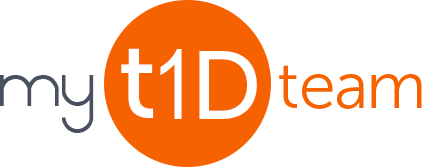
Powered By




 Continue with Facebook
Sign up with your email
Continue with Facebook
Sign up with your email
Breakfast is often called the most important meal of the day, but if you or your child has type 1 diabetes, it might also be the most frustrating meal of the day. It can be challenging to find the right combination of foods that are quick, tasty, and help you best manage your health — especially when time is tight.
This article aims to lend a hand, offering general tips for a healthy breakfast — including just what foods to keep on hand — followed by four recipes that are suitable for adults and children with type 1 diabetes. These family-friendly breakfast ideas focus on balancing carbohydrates, proteins, and healthy fats to maintain stable blood sugar levels.
Starting off the day with one of these four diabetes-friendly breakfasts can help regulate blood sugar for balanced energy levels, as well as help prevent diabetes-related problems later in life. Just remember to collaborate with a physician and registered dietitian before you get cooking.
With type 1 diabetes, the pancreas does not make enough insulin, the hormone involved in blood sugar regulation. To help balance blood sugar, it’s important to eat the right types of foods at the right times. One of the best ways to do this is by starting the day with a healthy, diabetes-friendly breakfast — the following tips can help guide you.
Aim to eat breakfast within an hour of waking up. That’s because during sleep, blood sugar naturally dips. As you wake up, cortisol, or the stress hormone, kicks in to help you get motivated and ready to start the day. However, cortisol can raise blood sugar because it releases glucose stored in cells. To balance morning blood sugar, a healthy breakfast should include protein, healthy fats, and fiber-rich carbohydrates.
A meal with protein and healthy fats, alongside carbohydrates, has been shown to initially prevent a spike in blood glucose. Keep in mind that blood sugar may rise a few hours later, so it’s important to plan for this with your doctor and dietitian.
Opt for carbohydrates that contain fiber. Dietary fiber is the indigestible parts of plant foods. Fiber-rich carbs are digested and absorbed more slowly, helping to maintain balanced blood sugar levels between meals and preventing sharp spikes and drops.
Monitor portion sizes, balance ingredients, and maintain a consistent carbohydrate intake with each meal. Keep an eye on refined grains and added sugars, such as those found in candy and sweets and often in commercial cereals and granola, some types of yogurt, and ready-to-eat oatmeal. The delicious breakfast recipes below can help you stay on track.
To keep your mornings as smooth as possible for you and your family, keep some staple ingredients on hand. A well-stocked pantry and refrigerator will ensure that you always have what you need to make a balanced breakfast, help prevent initial blood sugar peaks, and get a variety of nutrients that support a healthy body and mind.
Healthy fat-rich breakfast foods include:
Protein-rich breakfast foods include:
Fiber-rich breakfast foods include:
Omelets are a perfect way to work in more fiber-rich vegetables, and the eggs’ protein helps curb blood sugar spikes after meals. Let your child help make their own omelet, if possible, because kids are more likely to want to eat veggies that they helped prepare. Go ahead and let them play with their food by giving their omelet a face with a bell pepper for a smile and olives as eyes.
This naturally sweet yet spicy recipe can be made a day or two in advance for a grab-and-go breakfast. Oatmeal is rich in a specific type of fiber called soluble fiber, which makes a gel-like texture in your stomach, helping to slow glucose absorption and promote gut health.
A smoothie is a great way to get a good amount of nutrients first thing in the morning, especially if you don’t care to eat early. The blend of whole foods is a much healthier choice than a sugary drink like juice, which can lead to increased insulin resistance. Naturally sweet bananas supply fiber for slower absorption, and the yogurt and unsweetened peanut butter provide a hefty punch of protein.
This delicious and healthy recipe for Whole-Wheat Blueberry Pancakes from Mayo Clinic is slightly modified for people with type 1 diabetes. Regular whole-wheat flour contains more fiber than the white type and adds some natural sweetness. Feel free to use another favorite fruit instead of blueberries. If you have extra time in the morning, let your child help with the prep.
On myT1Dteam, the social network for people and their family members who have type 1 diabetes, more than 3,400 members come together to ask questions and share their experiences with type 1 diabetes.
What type of recipes or foods do you or your children like? What are your favorite breakfast foods? Share your experience in the comments below, or start a conversation by posting on your Activities page.
Get updates directly to your inbox.



 Continue with Facebook
Sign up with your email
Continue with Facebook
Sign up with your email
Become a member to get even more




A myT1Dteam Subscriber
Carb counts would have been helpful!
We'd love to hear from you! Please share your name and email to post and read comments.
You'll also get the latest articles directly to your inbox.